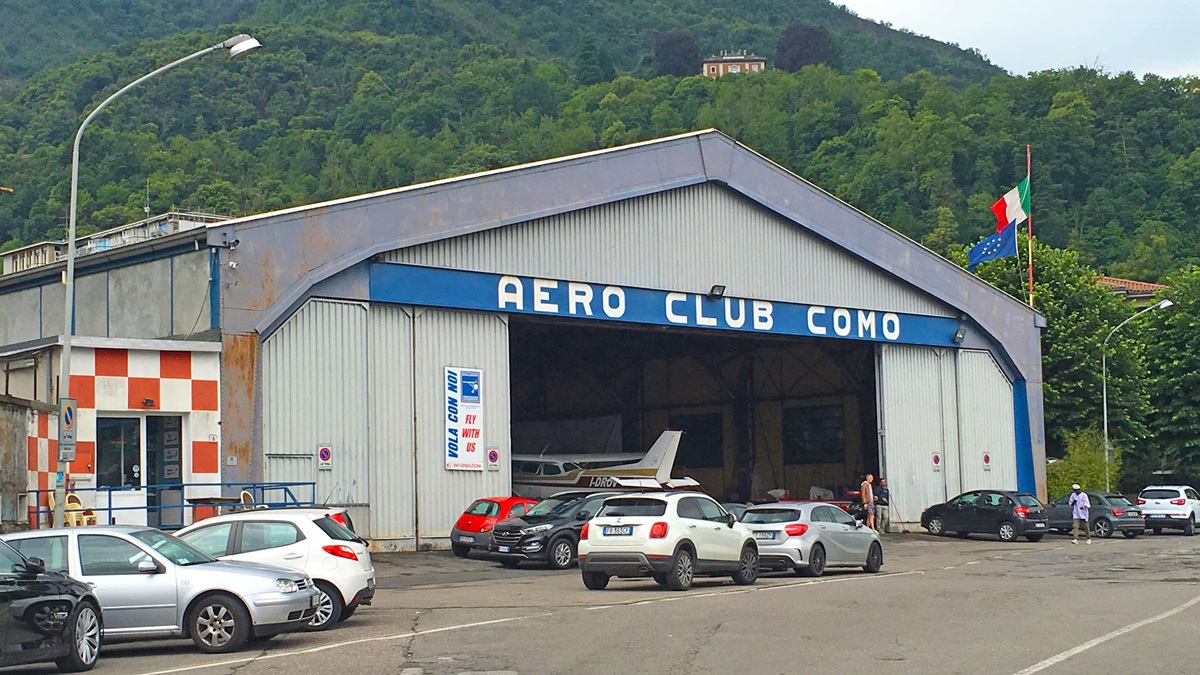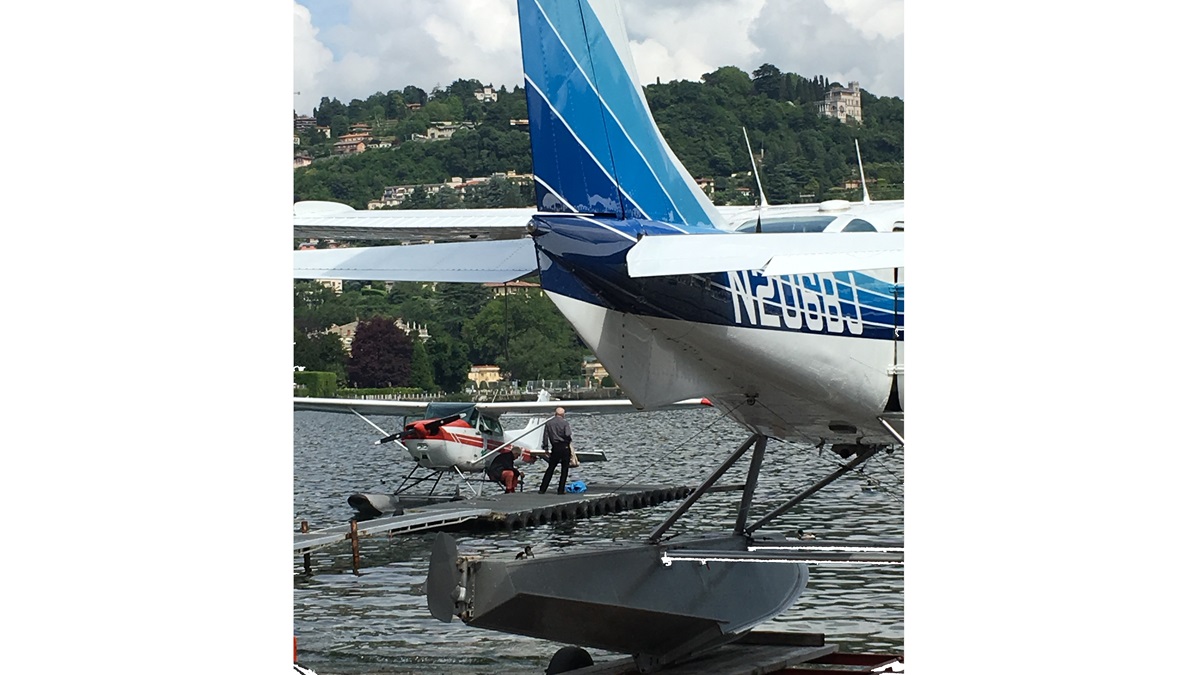Aero Club Como: Seaplanes with history
Following the road that separates Como’s Old Town with its meandering, narrow streets and romantic piazzas from the lake, you suddenly come upon a big aircraft hangar, its doors wide open, standing a bit out of context across the street from the lake. In the lake, seaplanes moored to a jetty rock gently in the swell. The area buzzes with activity, and passing tourists are constantly wandering into the hangar, chatting to anyone working in it, taking pictures in front of the aircraft, and asking if their children may sit in one. Others stand idly around the jetties, watching the airplanes being preflighted or taxiing to their water runway for takeoff.
The Aero Club Como was founded in 1930. However, seaplane operations went on at the same location as early as 1913, most notably the Gran Premio dei Laghi—a rally in which French pilot Roland Garros, who would become a World War I hero, competed flying a Morane-Saulnier. The current hangar is located at the space that served as the base of operations for this event.
Today, it remains a very active place. People from around the world, some of them famous, flock to it for sightseeing trips of the lake area. Passengers board one of the club’s Cessnas and experience the unique taxi and takeoff procedures of seaplane flying. Once airborne, the blue water quickly falls away and a breathtaking panorama of mountains rising steeply out of the lake unfolds. There is no better way to experience this particular environment than from the air.
“In the summer, we’re conducting around 30 sightseeing flights per day and have to turn people away,” says Cesare Baj, retired long-time president and all-time volunteer at the Aero Club. He explains that the club owns three Cessna 172s, one Cessna 206, a Cessna O-1 Bird Dog, and a Piper Super Cub, and is in the process of restoring a Republic Seabee to flying condition. The hangar is also home to a (flying) 1930 Caproni CA 100 biplane, and from its rafters hangs another Bird Dog.
Apart from the sightseeing business, the Aero Club Como is a flight school, where students can learn to fly ab initio or pilots can get a seaplane rating. “Our customers are in fact mostly from outside Italy, because even though there are many places in Europe where you can land an airplane on the water, very few will teach you how to,” Cesare explained. He went on to say that the club employs four A&Ps, one lineman, and two full- and seven half-time instructors. There’s a workshop, a maintenance area, classrooms for ground instruction, bunk beds—wait, what? “We prefer that our customers spend their money on their flying, not for hotels, and if they’re happy with the bare essentials, we’re offering them to stay here free of charge.” So there’s a room with bunk beds, a bathroom, and a very small kitchen available for pilots wanting to save a bit of money. (This being prime real estate and right by the lake, it’s a very generous offer.)
 The operation is financed by members' fees and a lot of volunteer work by people like Cesare. The club currently has 200 local members and 250 members from countries other than Italy, and—contrary to some communities in the United States—it experiences a lot of support from local authorities. “We’re trying to be a good neighbor,” said Cesare. “We’re regularly taking up children from neighboring schools, so they understand what’s going on when they hear and see our aircraft buzzing around all day.” The club also hosts special events and is available for conferences and weddings.
The operation is financed by members' fees and a lot of volunteer work by people like Cesare. The club currently has 200 local members and 250 members from countries other than Italy, and—contrary to some communities in the United States—it experiences a lot of support from local authorities. “We’re trying to be a good neighbor,” said Cesare. “We’re regularly taking up children from neighboring schools, so they understand what’s going on when they hear and see our aircraft buzzing around all day.” The club also hosts special events and is available for conferences and weddings.
Seaplane operations require a whole different skill set than land operations. Take, for example, runway maintenance. At Como, the runway is marked by buoys, which are anchored to the bottom of the lake by heavy chains. Those chains need to be replaced at regular intervals, so any maintenance person has to be a diver. As far as the actual flying goes, takeoffs assume a whole different aspect when the runway actually moves, buckles, and rolls. Learning to fly a seaplane in an area as visually stunning as this also fosters another talent useful in every kind of flying. Taking in the scenery while keeping the airplane level forces you to fly by the seat of your pants, because you don't want to look at the instruments all the time. Last but not least, in this mountainous area, seaplanes actually make a lot of sense. Not only is space for your traditional airport hard to find, driving on winding (albeit beautiful) roads originally created by ancient Romans (and in some instances possibly unchanged since then), can be challenging, especially in the summer, when a lot of drivers share that space with you. Parking is an even bigger challenge. Isn’t it much more relaxing to get into the seaplane, fly to a shore-side restaurant, land on the lake, moor the aircraft, and enjoy the breathtaking scenery all the way without the stress of other people getting impatient behind you or snapping up that parking space you had your eye on?
Finally, there may be a lesson here. This being Europe, flying involves user fees, expensive fuel, and rules and regulations impeding the freedom to fly. Yet, the Aero Club Como is thriving, is a hub of activity, and is appreciated by the community, thanks to literally opening its hangar doors to all and everyone. And people like Cesare are always willing to talk and share their flying skills. That’s worth copying.

























